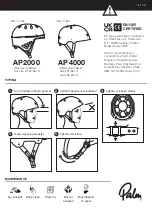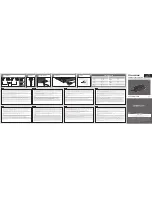
QuercusVL Programming Manual
Returns a detector from the unit's detector list, which is specified by one of the
following two parameters:
○
Index: position of the detector in the list of detectors of the unit.
○
Id: detector's identifier.
Only one of them can be used; in the parameter not used, -1 must be indicated.
In C++, if there is no ConfigurationDetector with the specified index/position, returns
an invalid one; in C returns null.
In C, when the object is needed no more, the function
VL_ConfigurationDetector_Release must be called (see Release method from
ConfigurationDetector class)
In C the parameter “h” is a handler of
Configuration.
●
DeleteDetector
C++: bool DeleteDetector( int index, int id )
C:
int VL_Configuration_Delete_Detector( int h, int index, int id )
Deletes a detector from the unit's detector list, which is specified by one of the
following two parameters:
○
Index: position of the detector in the list of detectors of the unit.
○
Id: detector's identifier.
Only one of them can be used; in the parameter not used, -1 must be indicated.
Returns true if deletion was successful, false otherwise.
In C the parameter “h” is a handler of
Configuration.
●
ApplyDetector
C++: bool ApplyDetector( ConfigurationDetector detector, VLConfigurationActionType
action, int previousId )
C:
int VL_Configuration_Apply_Detector( int h, int hDetector, int action, int
previousId )
Joins a new detector into the unit's detector list, or modifies an existing one. The action
done will depend on the parameter “action” (see 3.61. VLConfigurationActionType Type
type).
If an existing detector is going to be modified, the old identifier must be specified (as it
may have been modified) with the parameter “previousId”. If it is a new detector which
is going to be joined, then use value -1.
Quercus Technologies
89
















































